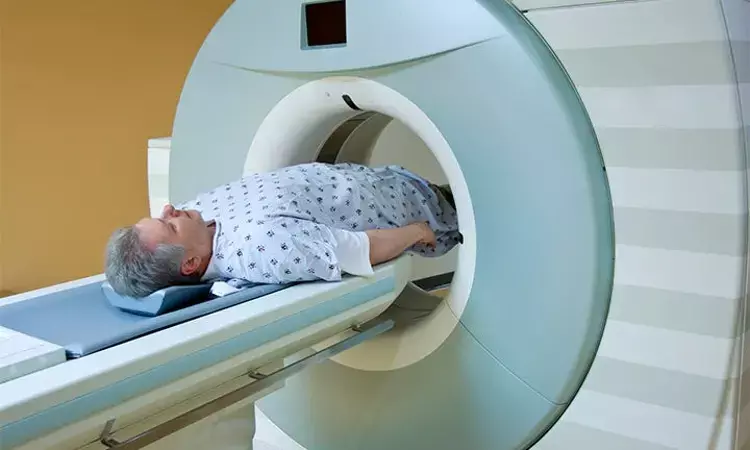- Home
- Medical news & Guidelines
- Anesthesiology
- Cardiology and CTVS
- Critical Care
- Dentistry
- Dermatology
- Diabetes and Endocrinology
- ENT
- Gastroenterology
- Medicine
- Nephrology
- Neurology
- Obstretics-Gynaecology
- Oncology
- Ophthalmology
- Orthopaedics
- Pediatrics-Neonatology
- Psychiatry
- Pulmonology
- Radiology
- Surgery
- Urology
- Laboratory Medicine
- Diet
- Nursing
- Paramedical
- Physiotherapy
- Health news
- Fact Check
- Bone Health Fact Check
- Brain Health Fact Check
- Cancer Related Fact Check
- Child Care Fact Check
- Dental and oral health fact check
- Diabetes and metabolic health fact check
- Diet and Nutrition Fact Check
- Eye and ENT Care Fact Check
- Fitness fact check
- Gut health fact check
- Heart health fact check
- Kidney health fact check
- Medical education fact check
- Men's health fact check
- Respiratory fact check
- Skin and hair care fact check
- Vaccine and Immunization fact check
- Women's health fact check
- AYUSH
- State News
- Andaman and Nicobar Islands
- Andhra Pradesh
- Arunachal Pradesh
- Assam
- Bihar
- Chandigarh
- Chattisgarh
- Dadra and Nagar Haveli
- Daman and Diu
- Delhi
- Goa
- Gujarat
- Haryana
- Himachal Pradesh
- Jammu & Kashmir
- Jharkhand
- Karnataka
- Kerala
- Ladakh
- Lakshadweep
- Madhya Pradesh
- Maharashtra
- Manipur
- Meghalaya
- Mizoram
- Nagaland
- Odisha
- Puducherry
- Punjab
- Rajasthan
- Sikkim
- Tamil Nadu
- Telangana
- Tripura
- Uttar Pradesh
- Uttrakhand
- West Bengal
- Medical Education
- Industry
Study Finds Optimal Method For Prostate Volume Measurement in PI-RADS

Prostate volume and PSA density (PSAd) are important in the risk stratification of suspected prostate cancer (Pca). In a study, researchers have found that the segmentation method for PSA density outperforms the traditional ellipsoid method for high-grade cancer. The study findings were published online in the journal Clinical Imaging on September 20, 2021.
Prostate volume plays an important role in the workup of suspected prostate cancer in addition to disease management. Traditionally, prostate volume was assessed by using ellipsoid measurements on ultrasound. However, this has been found to be user-dependent and has poor reproducibility. Prostate Imaging Reporting & Data System (PI-RADS) v2.1 allows for determining volume via segmentation or ellipsoid calculation. To further examine the ellipsoid and segmentation volume calculation methods, Dr Kiran R. Nandalur and his team conducted a study and evaluated if PSAd diagnostic performance is altered with ellipsoid and segmentation volume calculation methods.
In a retrospective study, the researchers included 397 men who underwent MRI and had recent pathology, with subset analysis of grade group 2 and higher and grade group 4 and higher. They determined prostate total volumes using ellipsoid calculations (TVe) and with semi-automated segmentation (TVs), along with inter-rater reliability with intraclass correlation coefficient (ICC). They calculated PSAd for TVe and created TVs and ROC curves to compare performance for Gleason ≥3 + 4 and ≥4 + 4 diseases.
Key findings of the study:
- Upon analysis, the researchers found that the traditional ellipsoid volumes significantly overestimated volumes with a mean of 55.4 mL vs 51.0 mL for segmentation volumes.
- For grade group 2 or higher disease, they observed that the two methods showed similar diagnostic performance with the area under the curve (AUC) of 0.63 for ellipsoid volumes and 0.64 for segmentation volumes.
- They noted that both methods demonstrated excellent inter-rater reliability with TVe with ICC of 0.93 and TVs with ICC of 0.9.
- However, for grade group 4 or higher disease, they found that the segmentation volume method outperformed the ellipsoid method, AUC was 0.61 for PSAd as derived from ellipsoid volume and 0.63 for segmentation.
The authors concluded, "Traditional ellipsoid measurements tend to overestimate total prostate volume compared to segmentation, but both methods demonstrate similar diagnostic performance of derived PSA density for PI-RADS clinically significant disease. "
They further added, "For higher grade disease, PSAd derived from segmentation volumes demonstrates statistically significant superior performance. Both methods are viable, but segmentation volume is potentially better."
For further information:
Medical Dialogues Bureau consists of a team of passionate medical/scientific writers, led by doctors and healthcare researchers. Our team efforts to bring you updated and timely news about the important happenings of the medical and healthcare sector. Our editorial team can be reached at editorial@medicaldialogues.in.
Dr Kamal Kant Kohli-MBBS, DTCD- a chest specialist with more than 30 years of practice and a flair for writing clinical articles, Dr Kamal Kant Kohli joined Medical Dialogues as a Chief Editor of Medical News. Besides writing articles, as an editor, he proofreads and verifies all the medical content published on Medical Dialogues including those coming from journals, studies,medical conferences,guidelines etc. Email: drkohli@medicaldialogues.in. Contact no. 011-43720751


